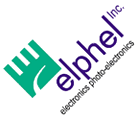05/24/16 [x393][framepars] by Andrey Filippov: testing/updating DDR3 training algorithms
testing/updating DDR3 training algorithms
Main Page
Main Page
Tmp manual
05/24/16 [x393][master] by Oleg Dzhimiev: new initial phase
new initial phase
05/24/16 [x393][master] by Oleg Dzhimiev: initial phase set
initial phase set
Elphel camera parts 0393-10
0393-10-02 - NC393 camera frame:
← Older revision Revision as of 19:33, 23 May 2016 Line 9: Line 9: Machined from 0393-60-06 extrusion, Aluminum 6061T6 Machined from 0393-60-06 extrusion, Aluminum 6061T6 {{Cad4a|0393-10-02}} {{Cad4a|0393-10-02}} +---- +=== 0393-10-02A - NC393 camera frame === +Machined from 0393-60-06 extrusion, Aluminum 6061T6 +{{Cad4a|0393-10-02A}} ---- ---- Mikhail05/23/16 [mechanical-parts][master] by Mikhail Karpenko: Production
Production
05/23/16 [mechanical-parts][master] by Mikhail Karpenko: Add camera body split into two halfs
Add camera body split into two halfs
05/22/16 [x393][master] by Andrey Filippov: updated both bitstreams with corrected sensors memory buffer interfacing
updated both bitstreams with corrected sensors memory buffer interfacing
Tutorial 02: Eclipse-based FPGA development environment for Elphel cameras
Elphel cameras offer unique capabilities – they are high performance systems out of the box and have all the firmware and FPGA code distributed under GNU General Public Licenses making it possible for users to modify any part of the code. The project does not use any “black boxes” or encrypted modules, so it is simulated with the free software tools and user has access to every net in the design. We are trying to do our best to make this ‘hackability’ not just a theoretical possibility, but a practical one.
Current camera FPGA project contains over 400 files under version control and almost 100K lines of HDL (Verilog) code, there are also constraints files, tool configurations, so we need to provide means for convenient navigation and modification of the project by the users.
We are starting a series of tutorials to facilitate acquaintance with this project, and here is the first one that shows how to install and configure the software. This tutorial is made with a fresh Kubuntu 16.04 LTS distribution installed on a virtual machine – this flavor of GNU/Linux we use ourselves and so it is easier for us to help others in the case of problems, but it should be also easy to install it on other GNU/Linux systems.
Later we plan to show how to navigate code and view/modify tool parameters with VDT plugin, run simulation and implementation tools. Next will be a “Hello world” module added to the camera code base, then some simple module that accesses the video memory.
Video resolution is 1600×900 pixels, so full screen view is recommended.
Download links for: video and captions.
Running this software does not require to have an actual camera, so it may help our potential users to evaluate software capabilities and see if it matches their requirements before purchasing an actual hardware. We will also be able to provide remote access to the cameras in our office for experimenting with them.
05/21/16 [x393][framepars] by Andrey Filippov: Merge branch 'master' of github.com:Elphel/x393
Merge branch 'master' of github.com:Elphel/x393
05/21/16 [x393][framepars] by Andrey Filippov: debugging recover from corrupted image acquisition (i.e. wrong serial port setup)
debugging recover from corrupted image acquisition (i.e. wrong serial port setup)
05/20/16 [x393][framepars] by Oleg Dzhimiev: added default phases - might change later
added default phases - might change later
05/20/16 [meta-elphel393][master-next] by Oleg Dzhimiev: changed addr for 10389 temp sensor
changed addr for 10389 temp sensor
05/20/16 [meta-elphel393][master] by Oleg Dzhimiev: fixed scale 2
fixed scale 2
05/20/16 [meta-elphel393][framepars] by Oleg Dzhimiev: fixed scale
fixed scale
05/20/16 [meta-elphel393][framepars] by Mikhail Karpenko: Set default quality for cirbcuf in init script
Set default quality for cirbcuf in init script
05/20/16 [x393][master] by Mikhail Karpenko: Fix sensor power mode for 14Mpx in startup script
Fix sensor power mode for 14Mpx in startup script
